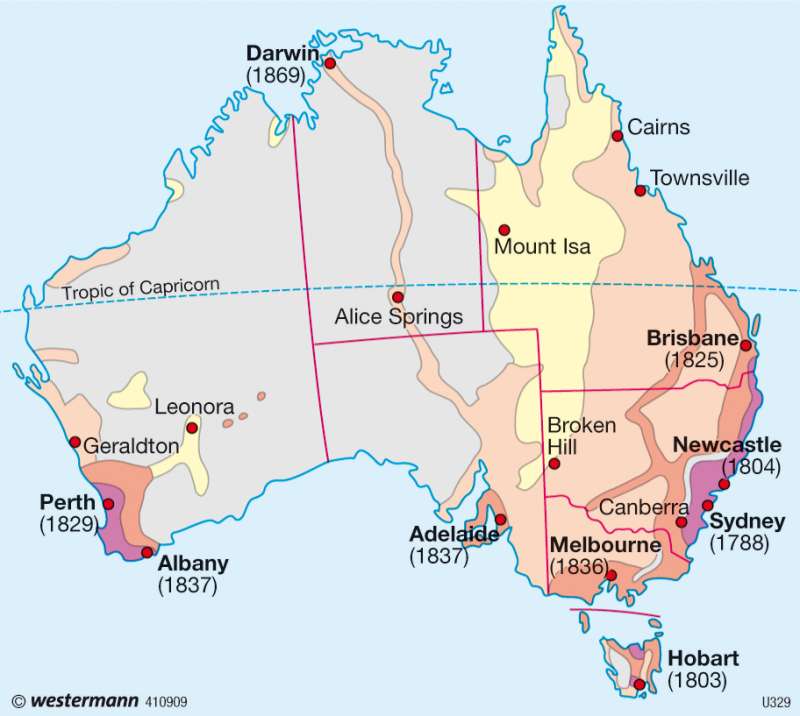Immigration
Australia and New Zealand
978-3-14-100790-9 | Page 121 | Ill. 6

Information
The map shows the living areas of the Aborigines. However, the economics of indigenous conflicts are indicated by the inclusion and occurrence of important mineral resources and unusable agricultural land.Settlement and land use
The conquest of the Australian continent as a settlement, aside from early populated coastal areas, had never taken place under subsistence perspective. The use of well-suited areas for grazing occurred in the Southeast until 1860, after the "squatting" principle: Flocks of sheep herded through open grasslands, were awarded for the grazing rights from the Crown.
When the gold rush subsided rapidly after 1860, the Crown land was distributed to immigrants. The result was a dense settlement in the fertile southeast, from which the natives were completely excluded. Spatially relevant settlement activities within the country unfolded only when the needs of the European market had a permanent use in an economic sense.
As labour became more expensive, use of machinery began to play a significant role. The harvester and the rotary cultivator were invented in Australia. Through this, the "wheat belt" was formed from around 1870. Sheep grazing in tropical areas proved to be impossible. Foundations for extensive cattle breeding were created and from 1880, frozen meat could be shipped to England. Largely due to climatic risks, there has been no further intensification of agriculture in the north. Irrigation projects such as the Ord River Scheme, in Kimberley in the north west of Australia, did not lead to the desired success due to the market distance. Settlements in these extensive zones have occurred only occasionally to date in the form of "Cattle Stations", "Road Houses" and isolated mining towns. The population density is calculated at less than 0.1 people per square kilometre. About 86 percent of the total Australian population lives south of the line from Port Augusta to Brisbane. Therefore, the main cities are dominating centres, covering approximately 68 percent of the total population of Melbourne, in Victoria.
W. Maresch; Ü: Colette Fleming




